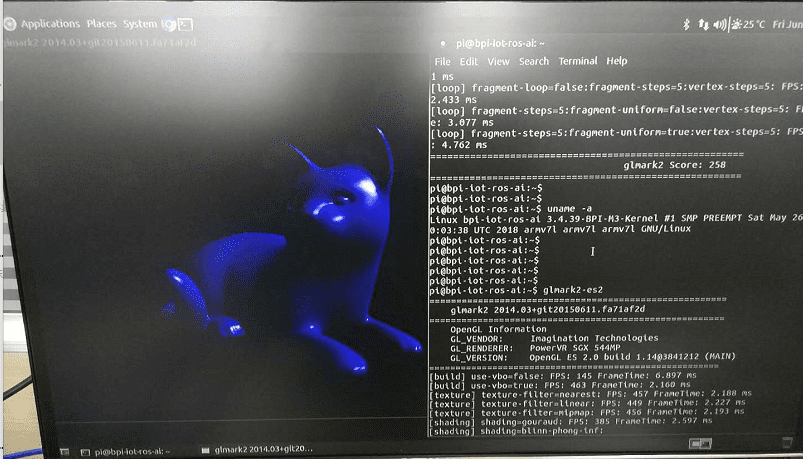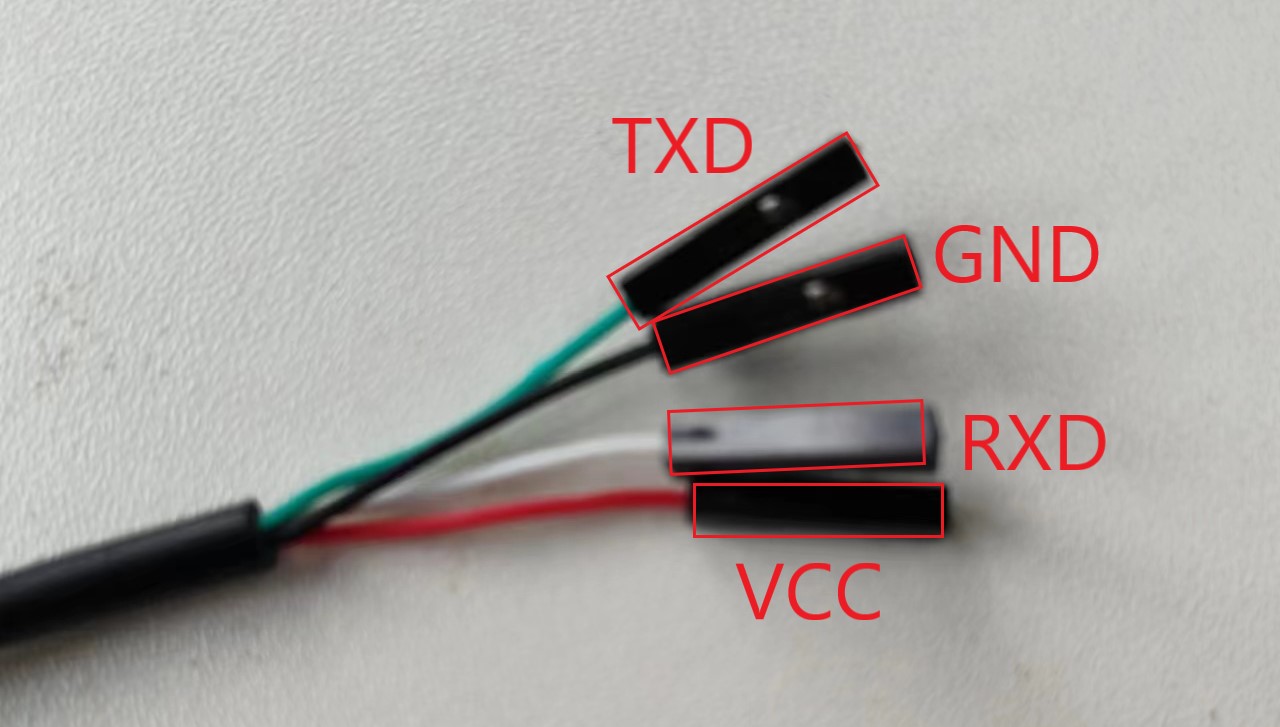
¶ Introduction
| More Infomation: Banana Pi BPI-W2 |
¶ specifications
¶ Development
¶ Prepare
-
Prepare 8G/above TF card, USB-Serial interface, PC with Ubuntu System
-
Using your USB-Serial Connect debug console on W2
| Rx and Tx need to be connected in reverse, so TTL lines are connected in black, green, and white order. |

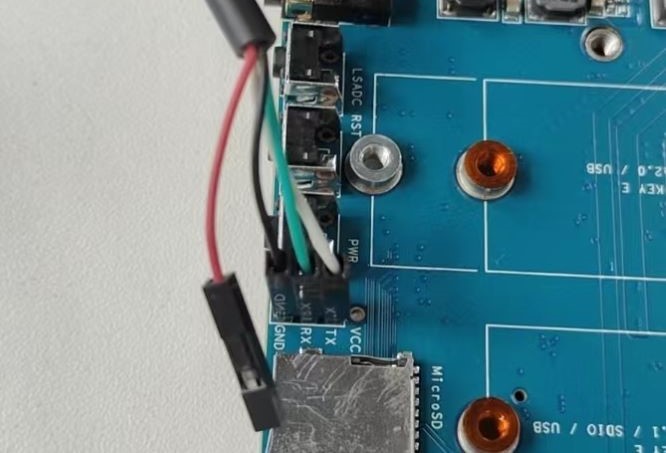
¶ Android
¶ Prepare
-
BPI-W2 USB flash tool is a usb download tool for flashing android image to board emmc, and only support Windows platform.
-
Make sure SW4 switch to '0' for emmc boot.

¶ Install Image with USB
| There is a document description in the doc folder. |
After launching rtumdfsample.exe, you can see the window shown in above figure. Please:
-
Choose flash type. (EMMC)
-
Select DDR type.
-
Open file, choose an install image file
-
Press and hold the usb button beside SW4 and connect board to PC with USB cable at the same time, If connected like the following figure1, release usb button and click the green robot icon, the tool will start to burn-in.

-
Burner has the icon to indicate status
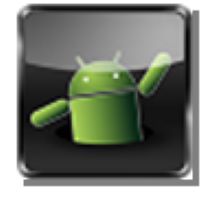
-
Burner has recognized the target board, and read to burn.
-
The board has finished the burning process.

-
During the burning process will be show icon

-
Burn install.img to target but fail, the debug log will save to log\error_log
-
-
If you are already load install.img with step3, you could click ‘reload img’ to use previous setting in current burn-in process. (green frame)
¶ How to support your IR Remote
¶ Linux
¶ Prepare
-
Linux image support SDcard or EMMC bootup
-
It’s recommended to use A1 rated cards, 8GB at least.
-
M2 Ultra and M2 Berry are compatiable with same Linux image.
-
Install bpi-tools on your Linux PC(if flash image with other tools, ignore this step). If you can’t access this URL or any other install problem, please go to bpi-tools source repo, download and install this tools manually.
$ apt-get install pv $ curl -sL https://github.com/BPI-SINOVOIP/bpi-tools/raw/master/bpi-tools | sudo -E bash -
Download latest Linux Image, and confirm that the md5 checksum is correct.
-
Default login: pi/bananapi or root/bananapi
-
Make sure SW4 switch to '1' for SD boot.
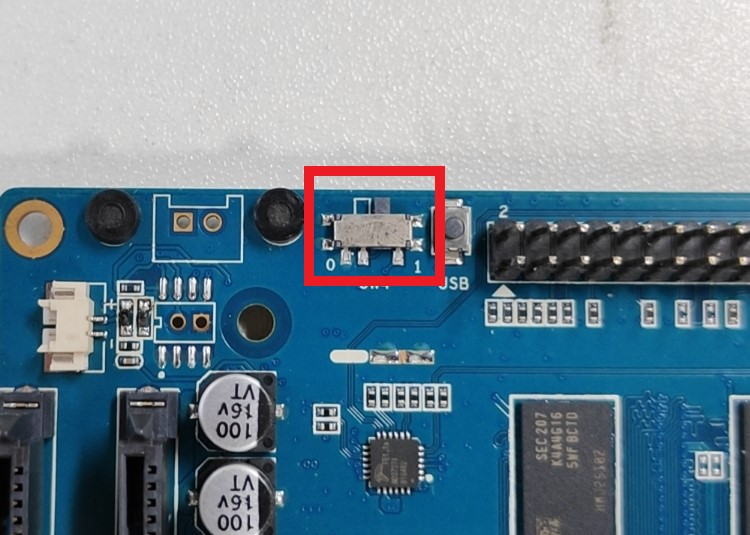
¶ Install Image with SD card
Windows PC
Install Image with Balena Etcher.
Balena Etcher is an opensource GUI flash tool by Balena, Flash OS images to SDcard or USB drive.
-
Click on "Flash from file" to select image.
-
Click on "Select target" to select USB device.
-
Click on "Flash!" Start burning.
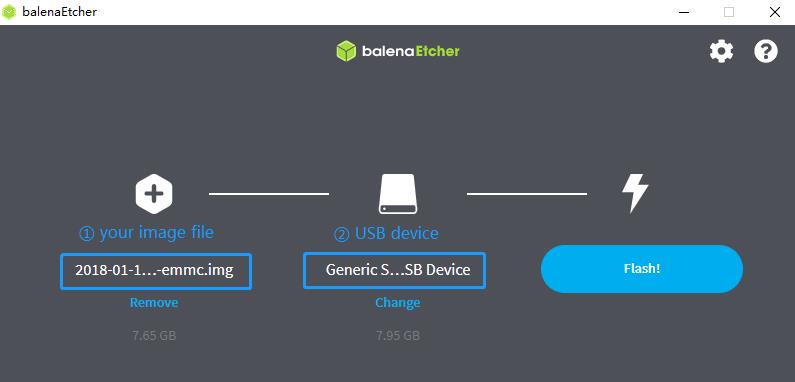
Linux PC
There are two methods for you to choose from.
-
Install Image with dd command on Linux, umount SDcard device /dev/sdX partition if mounted automatically. Actually bpi-copy is the same as this dd command.
sudo apt-get install pv unzip sudo unzip -p xxx-bpi-w2-xxx.img.zip | pv | dd of=/dev/sdX bs=10M status=noxfer -
Install image with bpi-tools on Linux, plug SDcard to Linux PC and run
sudo apt-get install pv unzip sudo bpi-copy xxx-bpi-w2-xxx.img.zip /dev/sdX
¶ Install Image to eMMC
-
Prepare a SDcard with Linux image flashed and bootup board with this SDcard.
-
Unzip the image and copy it to a USB drive, plug the udisk to board and mount it.(If automatically mounted, ignore this step)
mount /dev/sdx /mnt -
There are two ways to install the linux image to board.
-
Install with dd command.
sudo dd if=/mnt/xxx.bpi-w2-xxx.img of=/dev/mmcblk0 bs=10M status=noxfer -
Install the linux image in udisk with bpi-tools command
sudo bpi-copy xxx-bpi-w2-xxx.img.zip /dev/mmcblk0
-
-
After download complete, power off safely and eject the SDcard.
¶ Advanced Development
¶ SATA
-
Mount dev on W2
-
After insert sata interface, execute
fdisk -l mount /dev/sdx /mnt/xxx
-
-
If you meet some errors when you mount SATA, try these following commands:
-
Create new partition
fdisk /dev/sdxset your partition numbers and size, after created partitions, input "wq" to save and quit.
-
Format the SATA
mkfs.ext2 /dev/sdx -
Mount sata
mount /dev/sdx /mnt/xxx
-
¶ SSD
-
After you success to insert SATA, we could input following commands to test SATA interface:
Test read speed
time dd if=/dev/xxx of=/dev/null bs=1M count=1000Test write speed
time dd if=/dev/zero of=/dev/sdx bs=1M count=1000
¶ HDD
-
After you success to insert SATA, we could input following commands to test SATA interface:
Test read speed
time dd if=/dev/xxx of=/dev/null bs=1M count=1000Test write speed
time dd if=/dev/zero of=/dev/sdx bs=1M count=1000
¶ NetWork
¶ GMAC
-
iperf3 -c [server]
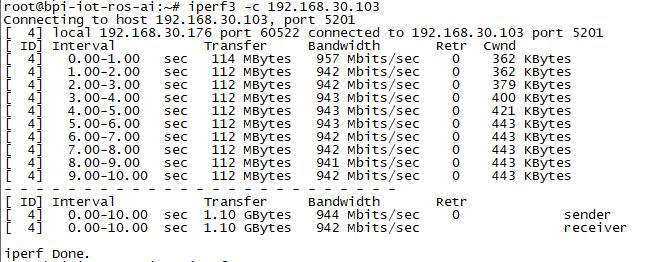
-
iperf3 -u -c [server]
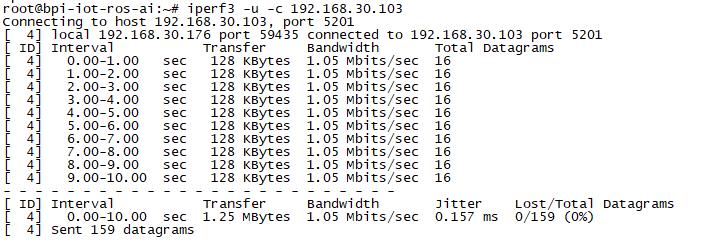
-
iperf3 -s
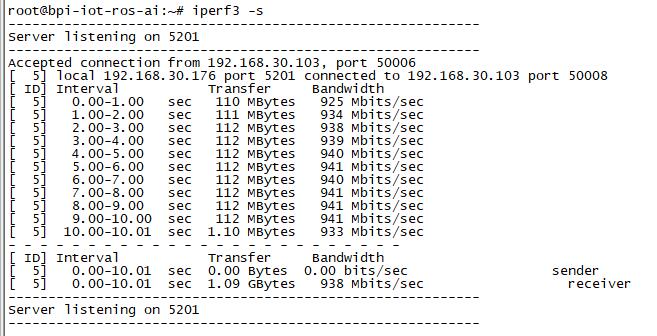
¶ STA
-
Use commands to setup WiFi client
ip link set wlan0 up iw dev wlan0 scan | grep SSID vim /etc/wpa_supplicant/wpa_supplicant.confnetwork={ ssid="ssid" psk="password" priority=1 }wpa_supplicant -iwlan0 -c /etc/wpa_supplicant/wpa_supplicant.conf dhclient wlan0 -
Use UI interface to setup WiFi Client

¶ GPU
-
Start OpenGL test
glmark2-es -
glmark2 Score: 30
